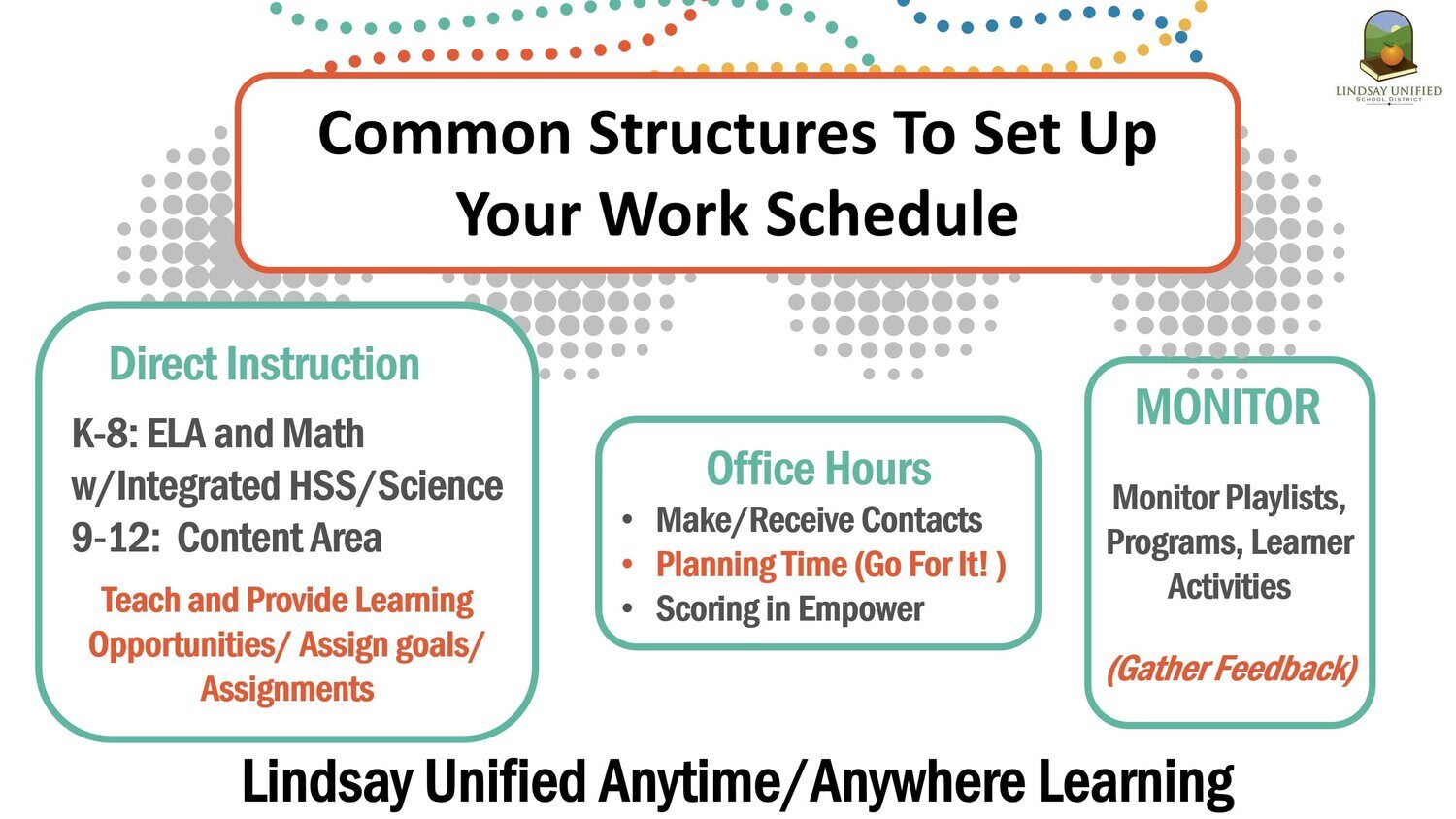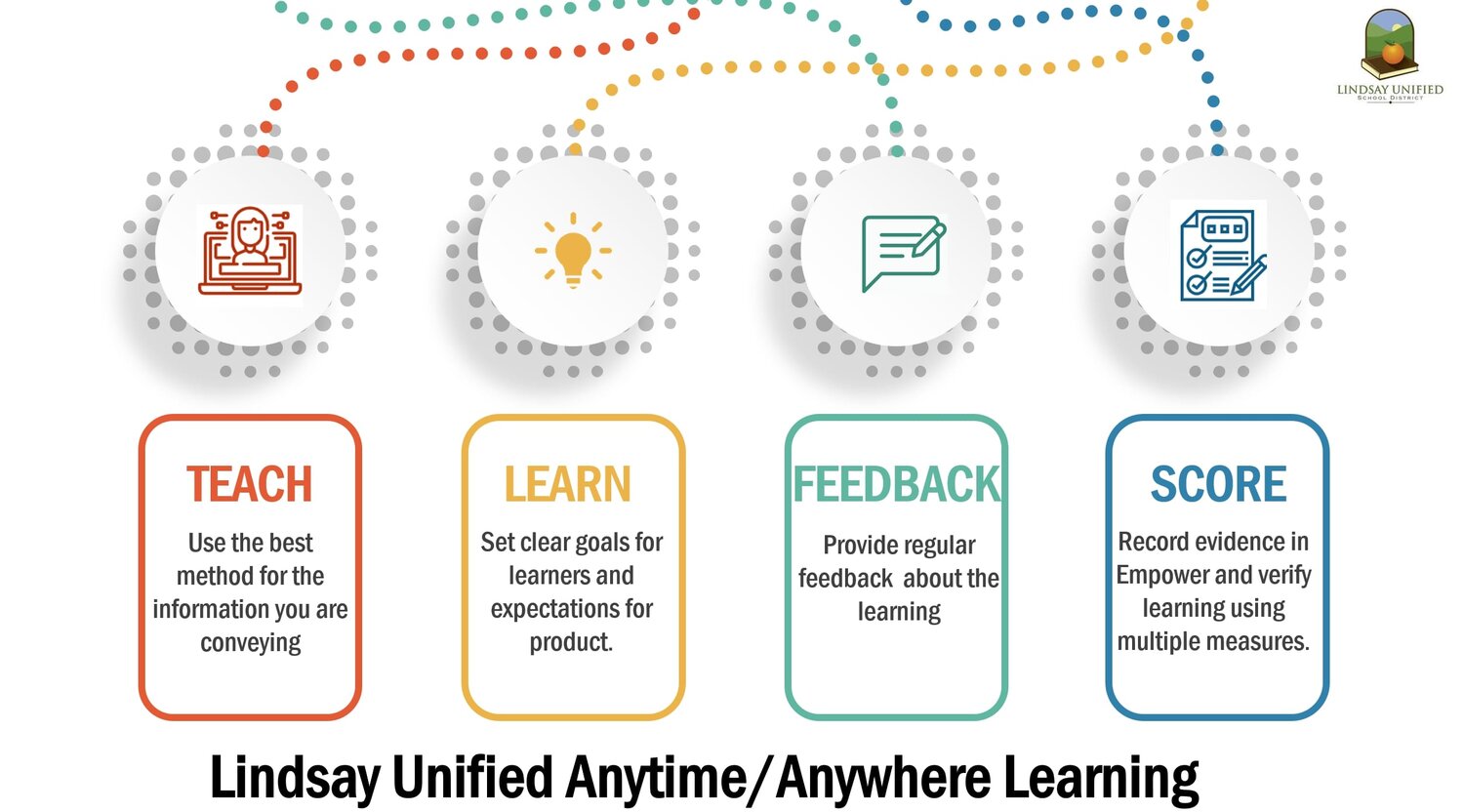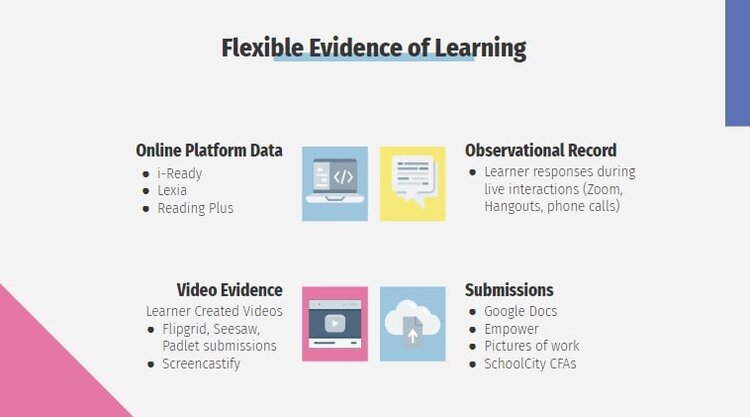District Response to Coronavirus: Lindsay Unified, California

THE COVID-19 CRISIS
In a Monday meeting on March 16, 2020, the school board of Lindsay Unified School District, a 100% Title 1 PK-12 district of 4,100 students in rural California, decided to close the buildings the coming Wednesday. Superintendent Tom Rooney, who has led the district for eight years, reassured his community, “the buildings have closed, but the learning continues.” In this interview with Transcend, Melissa Hawkins, the district’s Coordinator of Educational Systems and Programs, explains how learning continuity takes place, and the crucial importance of March 17th in supporting this continuity. [Note: Lindsay’s students are called learners, and adults are called learning facilitators.]
BEFORE THE CRISIS
Transcend: What happened on Tuesday, March 17th?
Melissa Hawkins: We met with our learners and set the learning conditions WITH them about what learning would look like when we weren’t meeting in person. We set expectations around what their roles would be, what ours would be, how we’d work together. We as a district also put out a general home learning plan and curricular guidelines for parents so that they would know how to support their learners and not be as reliant on learning facilitators checking in.
Transcend: What systems did you have in place to enable this to happen?
MH: We were lucky to have most of the tech and learning pieces in place to go online the next day. The Learning Accelerator recently wrote about those systems.
During the Crisis
Transcend: Great. Readers can get those details there. So what happened after you closed your facilities? What have you been noticing?
MH: What we really saw was learning facilitators who had great connections with their learners were innovating on Day 2 with their learners. We as a district office team really began to learn from our learning facilitators, as did the principals at our schools. We as a district leadership team learned how to support our learning facilitators even more than we had before.

Transcend: Can you explain that a bit more?
MH: We began to look at what our learning facilitators were doing. They were our eyes and ears on the ground of this new experience. We have an incredibly dedicated staff, and we realized very quickly that we needed to support them. Many of our learning facilitators began by trying to run a traditional school day virtually, and we had to help them see that what you can accomplish in a day in school isn’t what you can do when the learners are home. We keep pretty tight controls on the school day, and our learning facilitators were trying hard to replicate that. They were very well-intentioned and wanting to provide the best; we had to help them scale back.
Transcend: What, concretely, did that look like?
MH: We encouraged them to work on relationships first—to talk to their learners.
Transcend: About what?
“We encouraged our learning facilitators to…talk to their learners. Do they have access to the internet? What time are they waking up? What space do they have to learn in? How are they going about their days? What are they and aren’t they able to do where they’re at? Are they learning?”
Transcend: What did you find out?
“We’re an agricultural community. Our parents are essential workers. They’re in the fields picking crops. We learned that a lot of our older (middle and high school) learners are going out into the fields with their parents during the day and weren’t able to get online until the evening. ”
MH: We also learned that older siblings were watching over younger ones during the day, and they also weren’t able to participate in live Zoom sessions. Given that they’re first responders, some families were dropping their learners off at babysitters’, but they weren’t comfortable dropping their 1:1 devices like iPads off with their learners. So our learners weren’t using the devices we’d given them during ‘school’ hours.
Transcend: How did you respond to these discoveries?
MH: Our learning facilitators responded first! We problem-solved together. Our role in District Office was to help them understand that if learners weren’t showing up for live instruction, it wasn’t necessarily because they didn’t want to be; it was because they couldn’t. And that our learning facilitators weren’t to blame. This unleashed our learning facilitators’ creativity; they then responded by shifting office hours to different times of the day, offering live instruction in the evenings, all kinds of things. We really began to explore what anytime / anywhere learning could look like. Is it live, is it recorded? What else?

Transcend: Let’s dive deeper into what anytime / anywhere learning looks like in Lindsay Unified.
MH: You know when this crisis started, there was a barrage of free programs! Well, we told our learning facilitators to try things out—use whatever works for you. We started to see tools and practices come to the forefront, and our role in District Office was to help surface, support, and spread those effective tools and practices.
Transcend: Can you give examples?
MH: Screencastify—we bought the paid subscription so we could reach the learners who couldn’t be there synchronously for live instruction. That let the purpose of live instruction time shift. It freed it up to be about finding out how our learners are doing, to building and deepening virtual relationships. We also explored and scaled Zoom and digital choice boards. Also Seesaw and Flipgrid.

The District Office could take the key things and build and offer structured professional development around them through TIE in South Dakota and our own Blended Learning Assistants—and that PD is all built around choice. We could pay them for the PD because of our federal TSL grant. We also recorded the sessions so our learning facilitators can continually access them.
Transcend: So you built personalized anytime / anywhere learning for adults?
MH: Exactly! The exciting thing is some of those tools then grew our learners’ capacity to record their responses to things which then let our learning facilitators assess what the learners were understanding in a very personalized way.
Transcend: We’re glad you brought up assessment. It sometimes gets lost in our current crisis response moment.
MH: We have performance-based assessments where it’s vital we see how our learners are learning. Before the crisis, our staff relied heavily on the district performance assessment system to know where their learners were, but this crisis is opening up new ways to show proficiency.
Before our learning facilitators said they wanted learners to be able to demonstrate proficiency in multiple ways, and now we’re actually doing it.
Transcend: Can you give examples?

MH: Our learners also are using Screencastify; where our learning facilitators use it for instruction, our learners use it to demonstrate what they know and share that with their learning facilitator. Likewise one-on-one Zoom: some learning facilitators keep individual students on Zoom calls for an extra couple of minutes so they can share what they understand, and then we can see that it’s their understanding and not their older sibling or parents helping them. Our staff is now having a robust conversation around how do you really know what a learner understands.
We arrived at a new flexibility in developing alternative ways of gathering evidence of learning
Transcend: Where are those conversations taking place?
MH: The District Office has put into place learning facilitator learning labs: district-wide PLCs (Professional Learning Communities) for different grade spans or based on the type of device the learners are using or specific online learning programs or tools they’re using. Like the PD I mentioned earlier, this is also optional and choice-based. We give our learning facilitators a safe platform to share, problem-solve, and use the collective knowledge bank they have.
Our district office meets every week to talk about whether there were similar problems and concerns across a bunch of the PLCs, and based on that we figure out how to support them: what protocols we could develop, what resources can be shared more broadly, what PD to design. Last week, for example, a 6th grade learning facilitator shared a webinar on effective digital instruction which we then shared out district-wide.
After the Crisis
Transcend: How is all this system-wide learning going to impact how you go forward?
Do parent-teacher conferences need to be face-to-face? We’re finding that we’re building deeper relationships with families through our small Zoom meetings. And the same applies to district-wide professional development.
MH: This is one of the key things that runs through all district office meetings: what can we take from distance learning that we can keep using next year. For example, flipped lesson design, supporting learners in center rotation by creating ‘how to videos’, Screencastify—that’s all here to stay at Lindsay.
We’re really being careful to gather data: to look at what’s working in distance learning now and capturing it so we don’t lose all that learning, and so we implement and spread these practices next year.
Transcend: Can you give some more examples?
MH: Do parent-teacher conferences need to be face-to-face? We’re finding that we’re building deeper relationships with families through our small Zoom meetings. And the same applies to district-wide professional development. We used to worry about the times we could begin PD given school end times and traffic. Now, we are wondering why we need to drag everyone to one location all the time. Let’s use Zoom. Also the length of PD—why do a whole day? Why not do smaller chunks? We also want to maintain these interest- and grade-band- based district-wide PLCs.
Transcend: Wow, this is all amazing! Thank you!
MH: Wait! Two more examples! Like many districts, we used to do a big Kinder registration day which we can’t this year, so we’re redesigning that as well. And then iPads—we didn’t use to let our K-1s take them home, but now, they are and everything’s fine. Generally speaking, we’re learning how to be even more flexible and responsive.
Melissa Hawkins is the Coordinator of Educational Systems and Programs for Lindsay Unified School District. She works with a team in the development of curriculum in all subject areas, with a goal of meeting the needs of all learners in a Performance Based System and provides professional development to support the delivery of curriculum using research-based instructional practices. Her work centers around implementing systems within the district to ensure all learners are prepared for life beyond the K-12 system. Twitter: @MhawkinsMelissa
Transcend supports communities to create and spread extraordinary, equitable learning environments.

